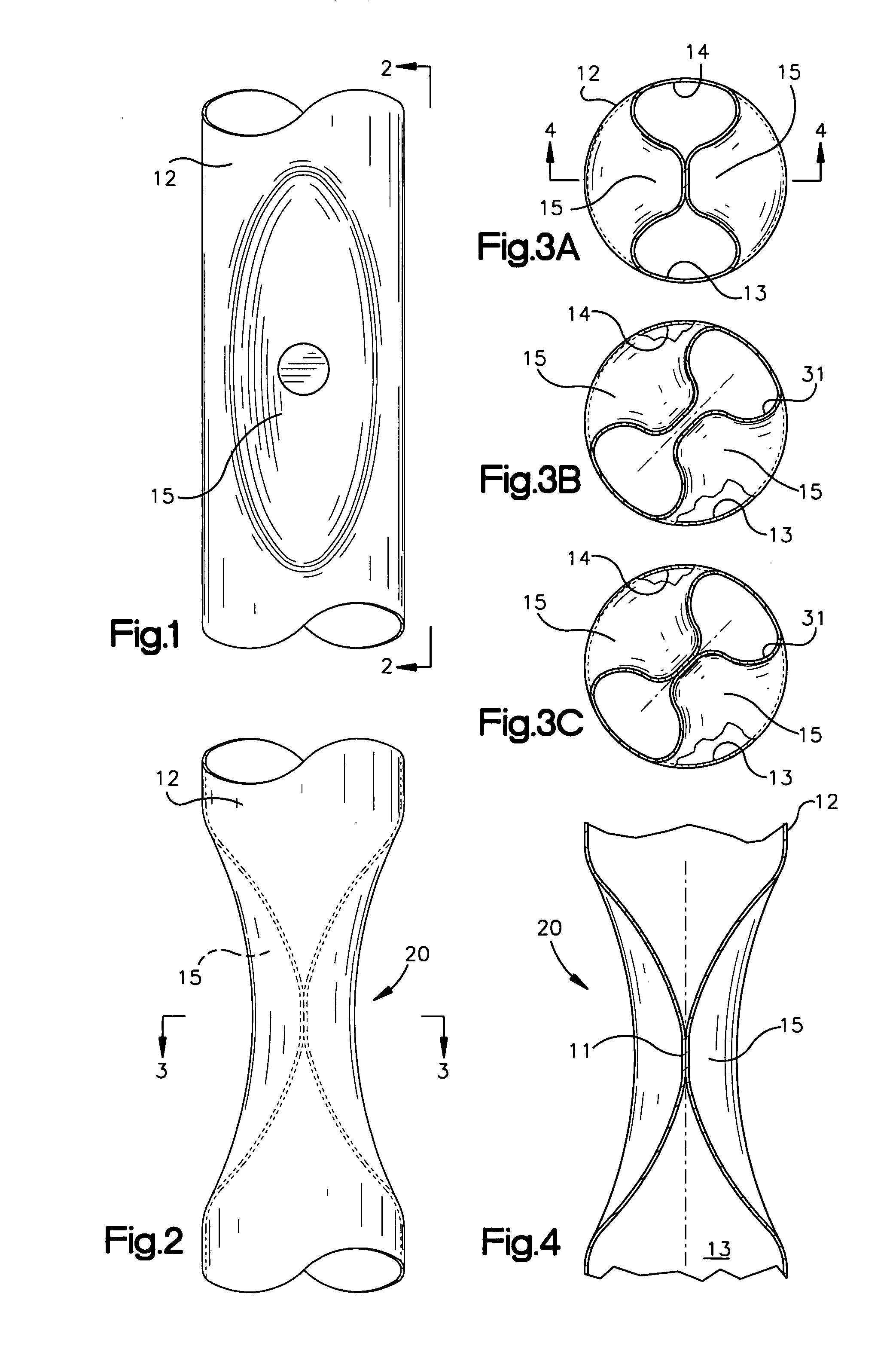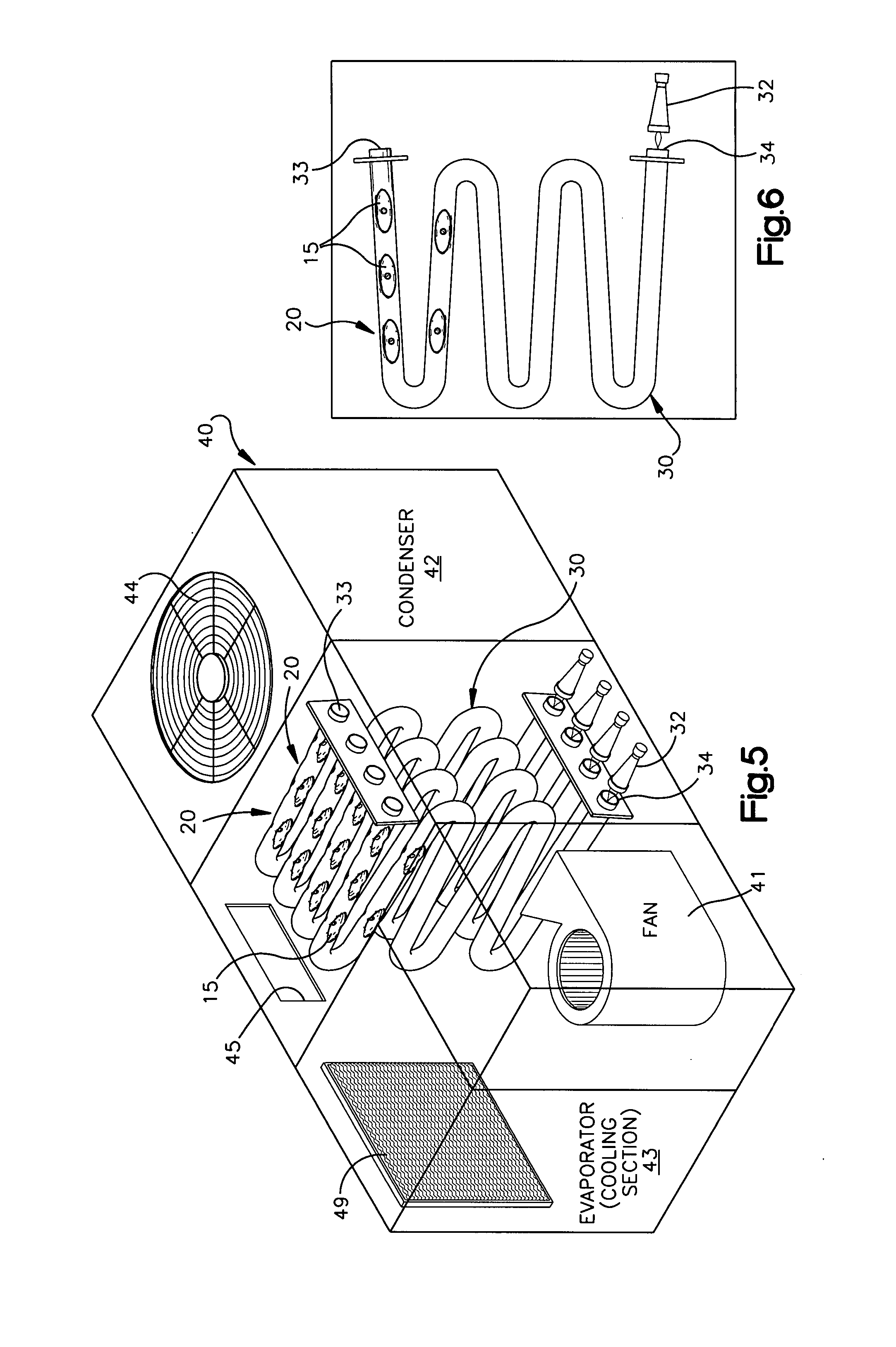Heat exchanger tube with integral restricting and turbulating structure
- Summary
- Abstract
- Description
- Claims
- Application Information
AI Technical Summary
Benefits of technology
Problems solved by technology
Method used
Image
Examples
Embodiment Construction
[0031]FIGS. 1-9 illustrate the construction of heat exchanger tubes 10, 30, 10′ constructed in accordance with preferred embodiments of the invention. The heat exchanger tube of the present invention may be used in many heating applications including, but not limited to, furnaces, water heaters, unit heaters and commercial ovens.
[0032] To facilitate the explanation, the tube construction shown in FIGS. 1-4 will be described first in connection with its use as a flue tube in a water heater (shown in FIG. 7). Referring also to FIG. 7, a gas heated residential water heater 21 is shown having a flue tube 10 of the present invention extending upwardly through a water heating chamber 22. The flue tube 10 consists primarily of a metal tube 12. The metal tube 12 has an interior surface 16, an inlet end 17, and an outlet end 19. At least one parabolic shaped indentation 15 is pressed into the metal tube 12. In the preferred embodiment, the indentations 15 are pressed into the metal tube 12 ...
PUM
 Login to View More
Login to View More Abstract
Description
Claims
Application Information
 Login to View More
Login to View More - R&D
- Intellectual Property
- Life Sciences
- Materials
- Tech Scout
- Unparalleled Data Quality
- Higher Quality Content
- 60% Fewer Hallucinations
Browse by: Latest US Patents, China's latest patents, Technical Efficacy Thesaurus, Application Domain, Technology Topic, Popular Technical Reports.
© 2025 PatSnap. All rights reserved.Legal|Privacy policy|Modern Slavery Act Transparency Statement|Sitemap|About US| Contact US: help@patsnap.com



